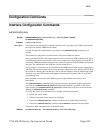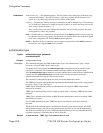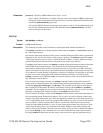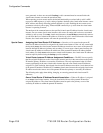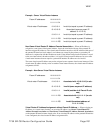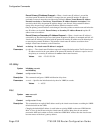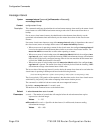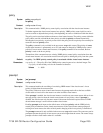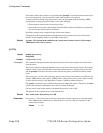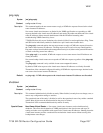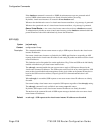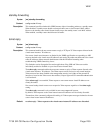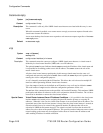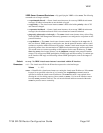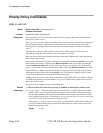VRRP
7750 SR OS Router Configuration Guide Page 235
policy
Syntax policy vrrp-policy-id
no policy
Context config>router>if>vrrp
Description This command adds a VRRP priority control policy association with the virtual router instance.
To further augment the virtual router instance base priority, VRRP priority control policies can be
used to override or adjust the base priority value depending on events or conditions within the chassis.
The policy can be associated with more than one virtual router instance. The priority events within the
policy either override or diminish the base priority set with the priority command dynamically
affecting the in-use priority. As priority events clear in the policy, the in-use priority can eventually be
restored to the base priority value.
The policy command is only available in the non-owner vrrp nodal context. The priority of owner
virtual router instances is permanently set to 255 and cannot be changed by VRRP priority control
policies. For non-owner virtual router instances, if the policy command is not executed, the base
priority is used as the in-use priority.
The no form of the command removes existing VRRP priority control policy associations from the
virtual router instance. All associations must be removed prior to deleting the policy from the system.
Default no policy - No VRRP priority control policy is associated with the virtual router instance.
Parameters vrrp-policy-id — The policy ID of the VRRP priority control expressed as a decimal integer. The
vrrp-policy-id must already exist for the command to function.
Values 1 — 9999
preempt
Syntax [no] preempt
Context config>router>if>vrrp
Description This command enables the overriding of an existing VRRP master if the virtual router’s in-use
priority is higher than the current master.
The priority of the non-owner virtual router instance, the preempt mode allows the best available
virtual router to force itself as the master over other available virtual routers.
When preempt is enabled, the virtual router instance overrides any non-owner master with an in-use
message priority value less than the virtual router instance in-use priority value. If preempt is
disabled, the virtual router only becomes master if the master down timer expires before a VRRP
advertisement message is received from another virtual router.
Enabling preempt mode improves the effectiveness of the base priority and the VRRP priority
control policy mechanisms on the virtual router instance. If the virtual router cannot preempt an
existing non-owner master, the affect of the dynamic changing of the in-use priority is diminished.
The preempt command is only available in the non-owner vrrp nodal context. The owner may not be
preempted because the priority of non-owners can never be higher than the owner. The owner always
preempts all other virtual routers when it is available.



